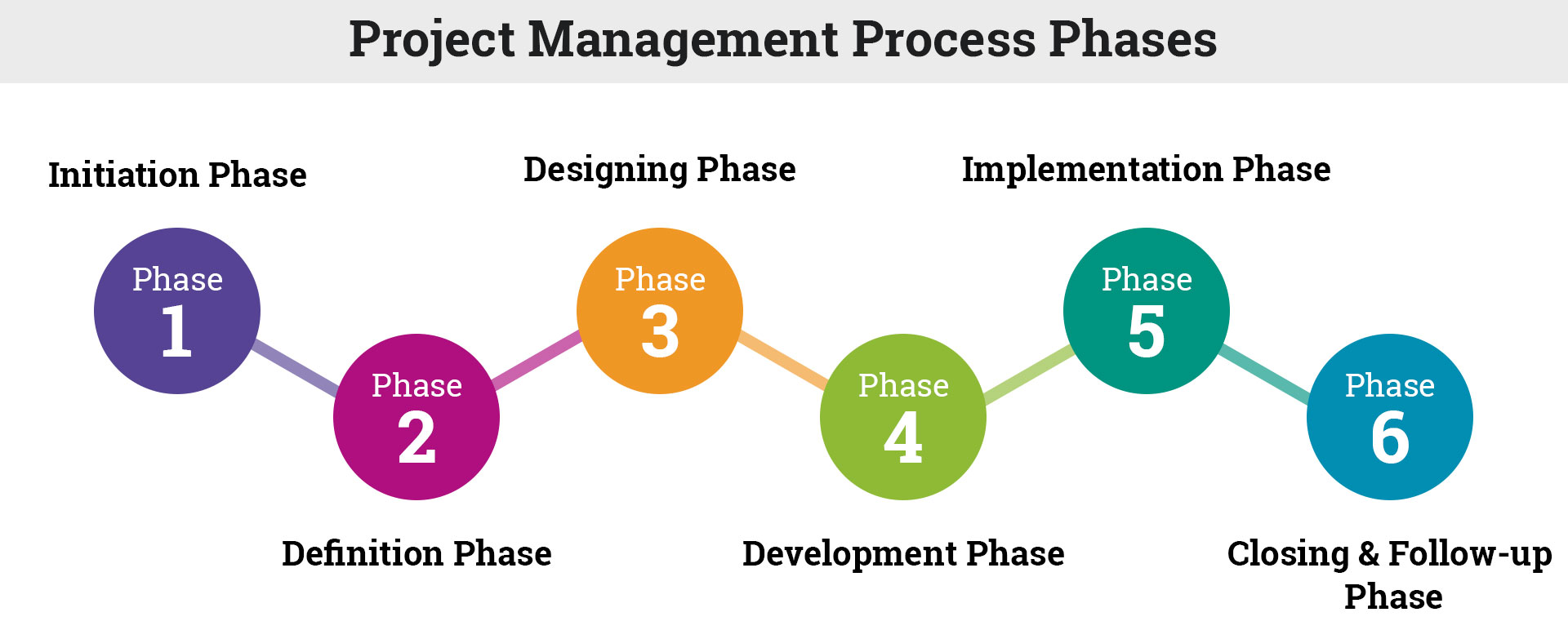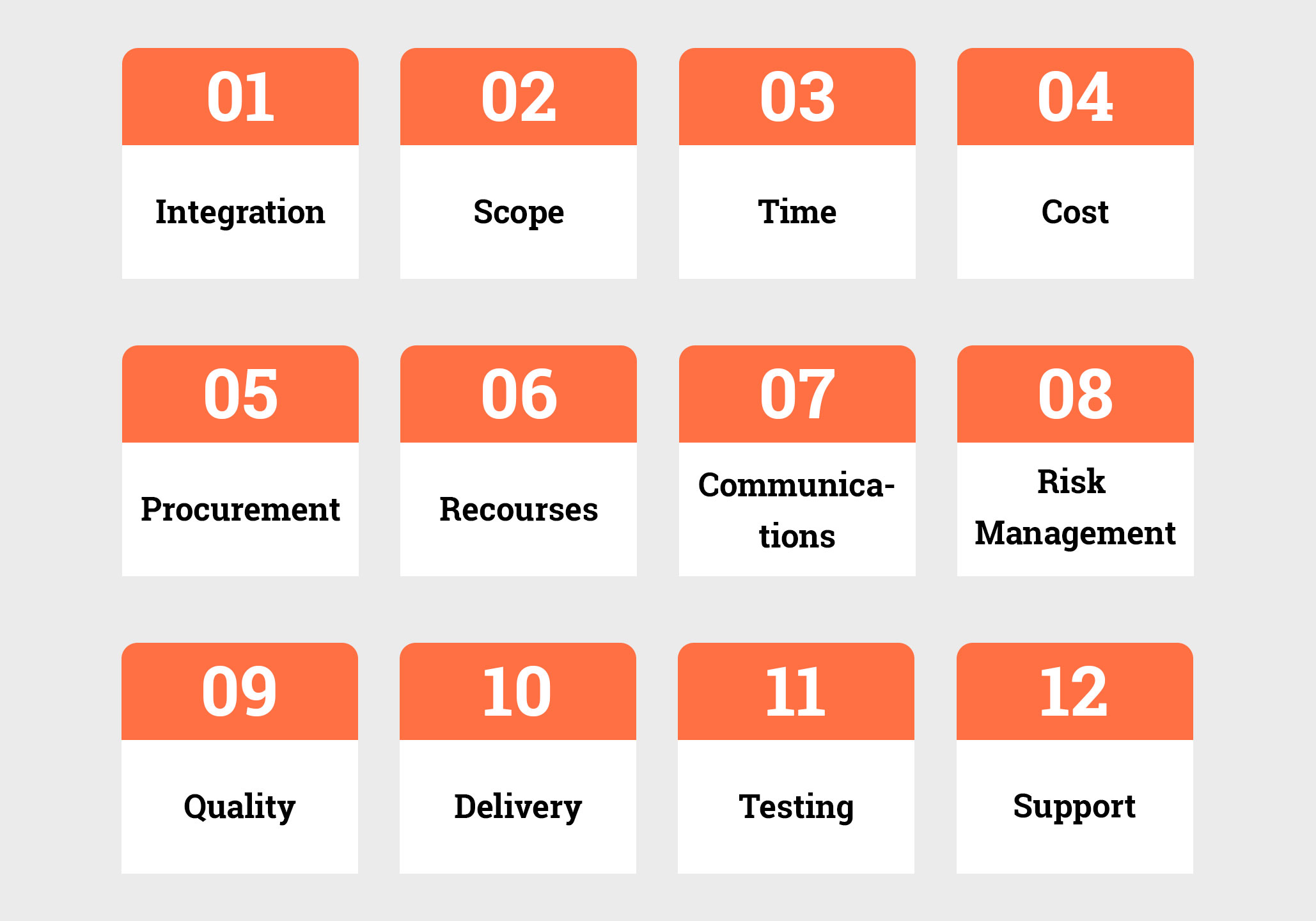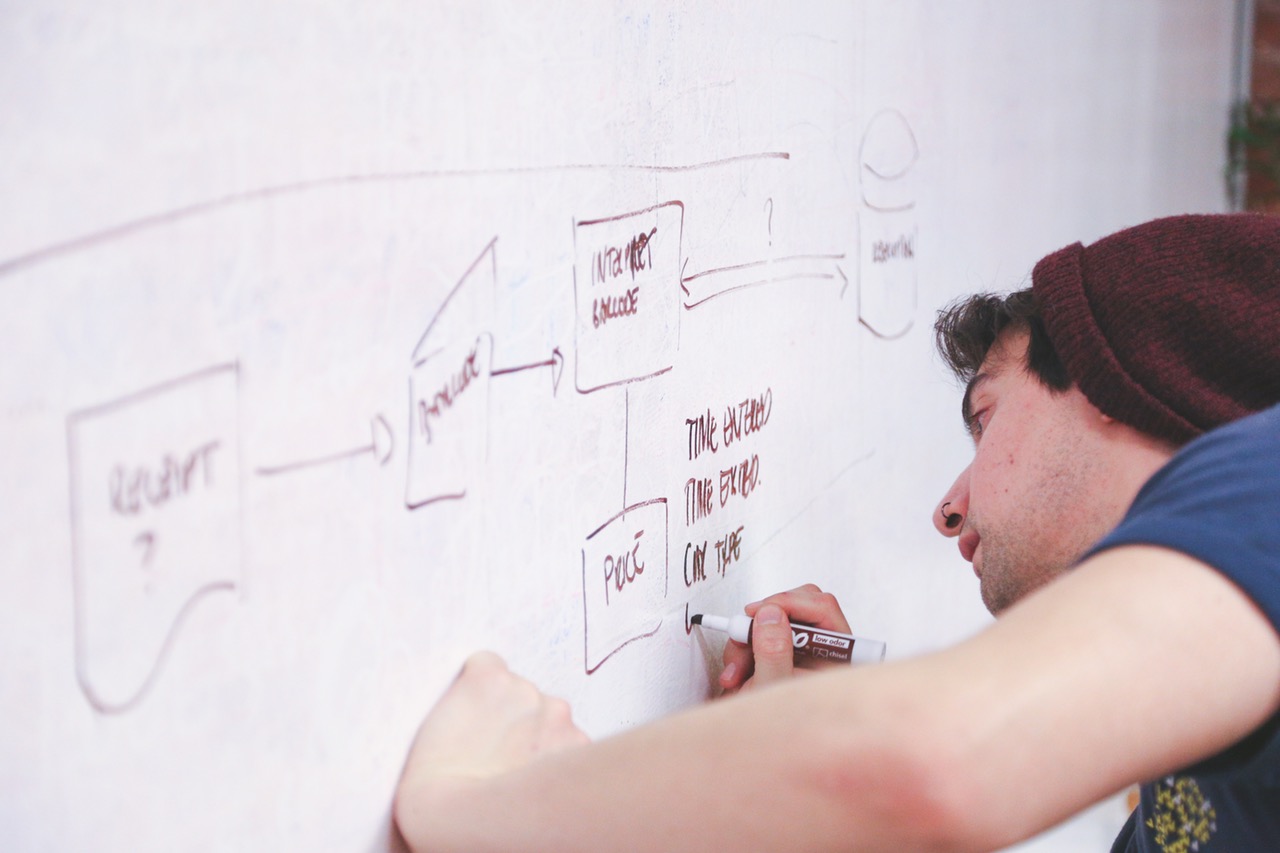A project is a specific set of operations designed to accomplish a single goal with a defined starting and ending time with assigned scope & resources. A project team often includes resources who don’t usually work together. Sometimes they are from different teams & domains. Starting from developing a software for a business process to the construction of a bridge, even business expansion to a new city or a promotional event- all are projects.
Project Management is the implementation of expertise, skills, knowledge, tools, techniques and methods to project activities to achieve the predefined project requirements within the timeline, with the assigned resources.
Typical project management is been divided into various phases to lead it in the best possible direction. During these phases, the project is again divided into smaller components, which makes it easier to monitor.
Basically, a project goes through 5 phases. Which are; Initiating, Planning, Executing, Monitoring & controlling and Closing. But here in Apogaeis, we divide each project into 6 phases to build a dynamic solution from the ground root level. Our Project Management Process phases are;

Now let’s discuss each phase of Apogaeis Project Management.
1. Initiation Phase
This phase is the beginning of the project. During this phase- ideas & strategies for the project are explored and analysed. The objective of this phase is to examine the feasibility of the assignment. After analysing the project scope, resource planning is made and project objective, individual roles & responsibilities are being elaborated.
The project proposal has been developed by the assigned project manager, where the entire project objective, scope, project description, business plans, assigned resource details, roles & responsibilities, pre-defined project deadlines etc. has been mentioned. After that, the project proposal has been evaluated & after finalizing the financials, it is approved. The project work officially begins at the time of approval.
There are many questions to be answered during this initial stage. Like;
- Why this project?
- How feasible is it?
- Who are possible in-house & outside resources in this?
- What can we expect as an end result?
- What are the inside & outside scope of this project?
- What could be the takeaway from this project?
The project result should be very clear from the beginning only during the initiation stage itself. Basically, 3 types of software related projects are there. 1. R&D Projects, 2. “Proof of Concept” project (large solutions), 3. Working product delivery project. The objective of the project should make very clear to all the resources associated with the project to avoid any future miscommunication, which may impact the project delivery.
Project Management draws on 12 areas & these all areas are briefly discussed during the initial stage.

2. Definition Phase
The next phase of the project is definition phase. After the project is approved, definition stage initiates. In this phase the requirements related to the project are clearly specified. This includes identifying the roles & expectations that all of the involved parties have with respect to the project. Client’s role, information sharing, project flow, duration, service provider’s role & individual employee’s role, end users role and every other thing related to the project explained.
All the project related requirements are gathered & documented. These requirements includes;
- Preconditions
- Functional Requirements
- Operational Requirements
- Design Limitations
- Development Process
- Testing Cycle
During definition phase, it is essential for all the involved parties to collaborate for a better result. Client’s role is very important. Particularly the end users of the projected solution or product. During a project, it is always seen that end users are a little bit ignored. The project result benefits when the future actual users are involved. As a point of departure, it is helpful to make a habit of conducting meetings with all connected parties during the definition phase of a project.
Finally after all the involved parties collaborate, a final list of definitive requirements is developed and presented for the project decision maker’s approval. Once the list has been approved, the next phase of the project can begin. At the close of the definition stage, all the agreements, proposals, terms & conditions between the client & the service provider have been established. Guidelines that the project adheres to have been specified & the project team is evaluated according to that. After the end of definition phase, the client can’t add any new requirement in that particular project.
3. Design Phase
After the list of a requirement is finalized & approved during the definition phase, it goes to the next phase of the project management lifecycle. The Design Phase. In the initial part of the design phase, more than one designs are developed targeting the possible project objective. Depending the scope of the solution or product various designs are made which includes graphs, flow charts, HTML designs, sketches, photo images etc. The project managers (business analysts) use these designs to choose the most appropriate design, which can be used as the final project design. Similar to definition phase, once the design has been finalized, it can’t be changed in a later part of the project.
Once the designs are ready, the development team should have a complete set of direction to work on. A direction-setting strategy & a conceptual design. Irrespective of the project size & cost, designing is very important. Understanding the requirements & giving it a proper design is very essential for the future of the project. If the project is a large one & little bit complex, then the design becomes more relevant. A designing phase is one, where you can look at various potential solutions and put it down on the system as a design determining the most effective and efficient way to build the solution.

At the end of the design phase, the client can have a defined logical solution of their requirement. It is a logical solution because it exists on a designing tool. When it passed to the next phase, where the logical solution is turned into a physical solution, development phase starts. Developers can use their skills & expertise to build the solution based on the deliverables produced in the design phase.
4. Development Phase
During the development phase, everything needed to implement the project has been collected & arranged. Assigned resources, project managers, client representative are brought in. Schedules made, required tools, software & methods are finalized. Instructions are given to the resources and deadlines are set. The development phase is complete once the implementation is set to begin. This is the last phase where, if any explanations or project related information left, can be discussed. All matters must be clear for all the parties that will carry out the implementation process. During many projects, a different development process is not required, but everything must be clear what must be done in the upcoming process.
This is the phase that will test the project management abilities & strategy making skills to the full. If your strategies related to project development is effective and you are able to organize the resources and build coordination among them, you can successfully implement the deliverables. Here leadership skills are very much desired.
ALSO READ: “Product Development Journey: The Crucial Points Missing from your Market Strategy“
5. Implementation Phase
This is the phase, where the project started getting the shape. This phase involves the construction of the actual project result for which the entire project development cycle initiated. Programmers start writing codes, designers are involved in developing graphical resources, project managers are involved in project planning & account manager starts monitoring the execution process for client coordination. The implementation phase is the actual doing phase, and it is important to meet the pre-assigned deadlines and project plans to deliver on time.
At the finish of the implementation phase, the result is evaluated according to the list of the requirements which was created in the definition phase. After that, it is also evaluated according to the designs, made during the design phase. The phase is only complete when all of the requirements have been met & when the result matches with the design. All the people associated with the project should realise that sometimes it is not possible to achieve a result which precisely meet all of the requirements specified in the definition stage. Many unexpected events or technical challenges will come during the implementation phase.
This is the only case when changes can be made. The project manager after taking the input from the development team, discuss with the client & the internal decision makers. Little change in initial plan or design changes can make the final output effective & result driven.
6. Closing & Follow-up Phase
The project closing phase is the final phase of the project management process. In this phase, the project will formally close and then it reports the overall level of success to the client. Project closure also involves handing over the deliverables & documents to your client, sharing credentials, releasing external contractors & tools and officially informing your client of the closure of the project. After this, a post-implementation review is done to determine the success rate & note down all the lessons learn.
A project closure report has been made & shared with the client. Once that is approved, it is the official end of the project cycle.
Though it is one of the most important things to do, but many people neglect this part of closure; follow up. During this stage many activities undertake like- writing handbooks, preparing user manuals & training materials, setting up help desks and finally writing the project report. After handing over everything & providing required training to the users, the project team dismantles.
Conclusion
The saying “Think before you act” is at the heart of this Apogaeis 6 phase project management model. Each phase has its own importance and work package. Each work package has its own aspects that should be the focus of a successful working solution or product which can add a certain value to your client’s business.
For more detailed understanding of the Apogaeis Project Management Process, Contact us.










Nice post. I was checking continuously this blog and I’m impressed! Very useful information specifically the last section 🙂 I maintain such information much. I used to be looking for this certain info for a long time. Thank you and best of luck.